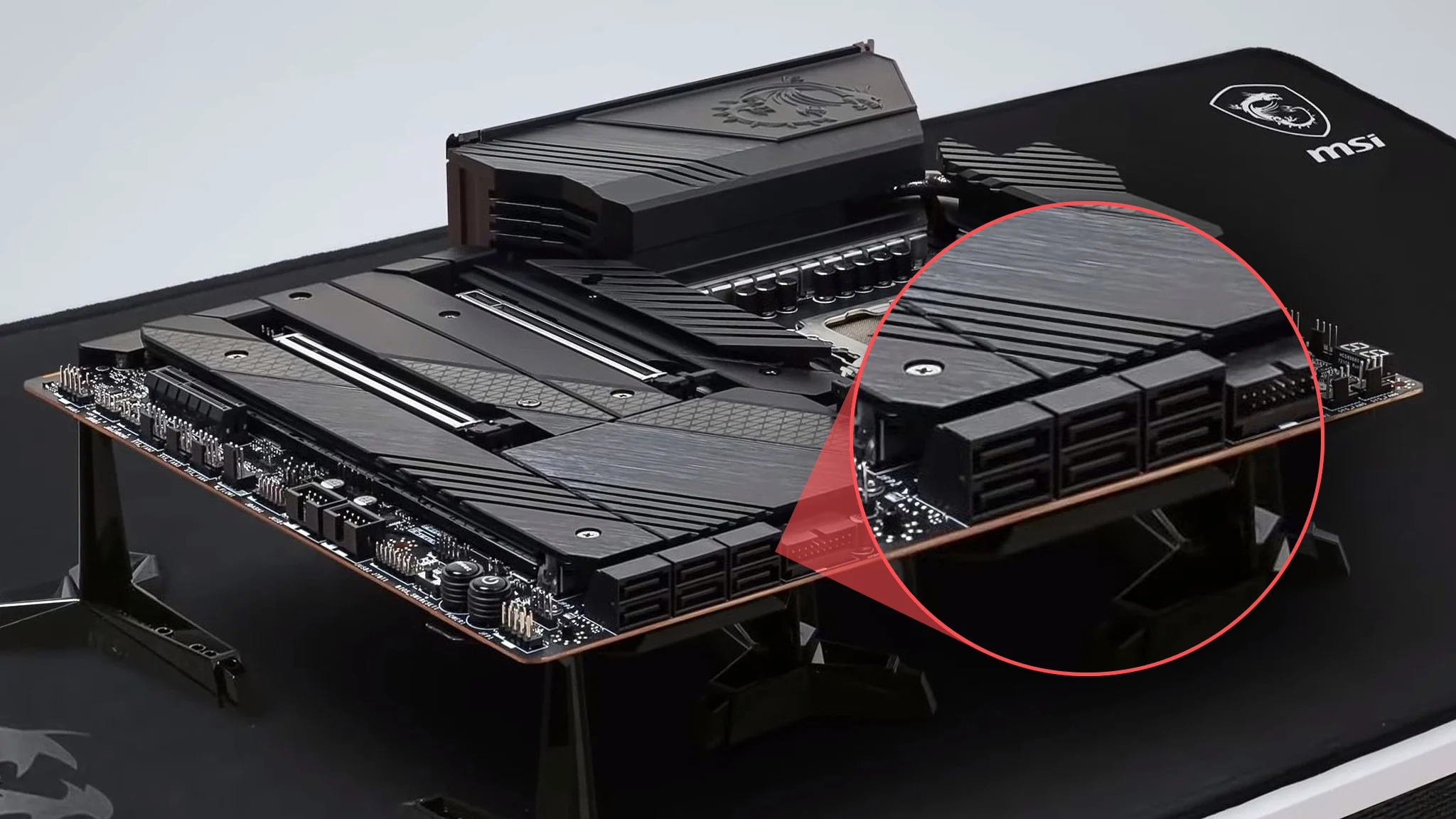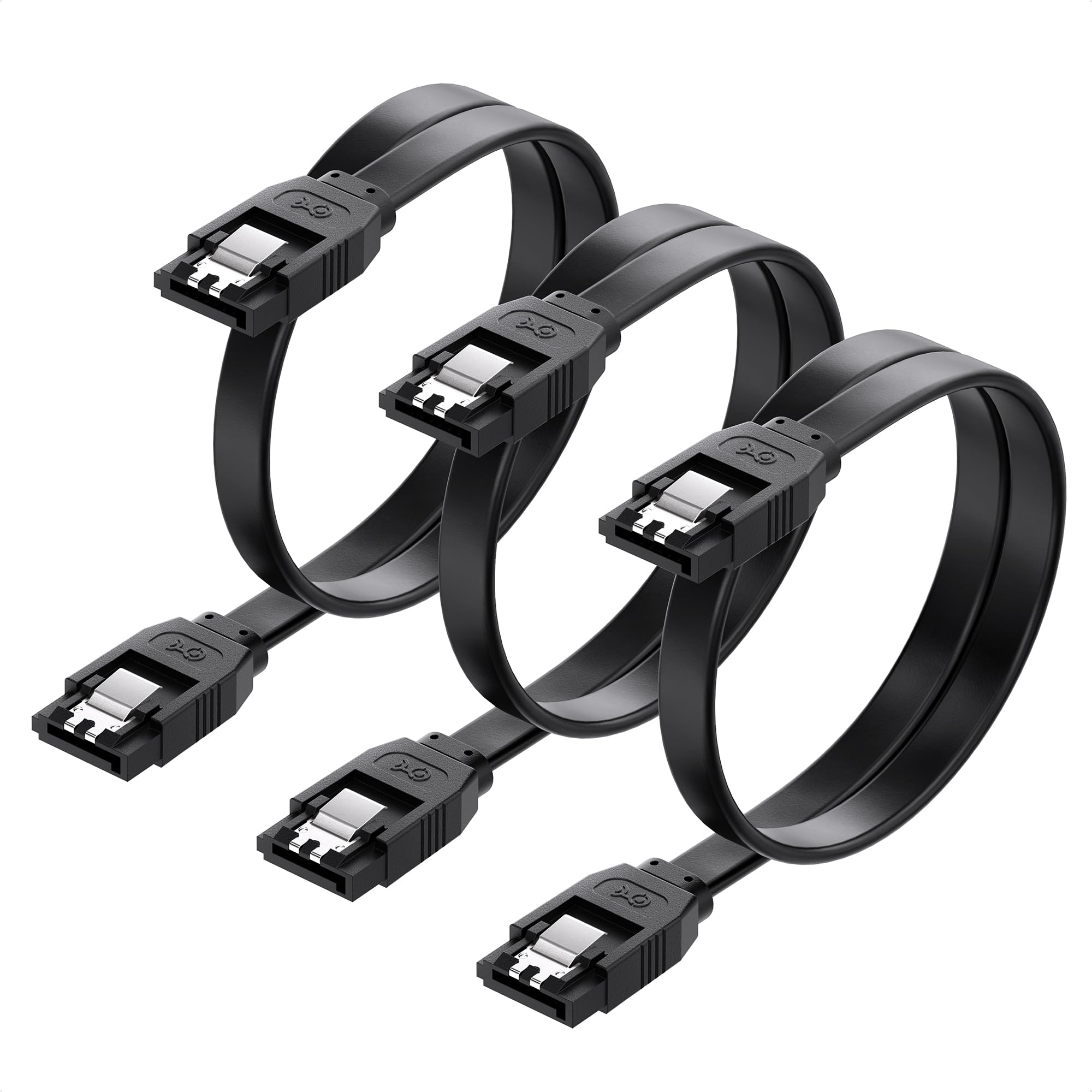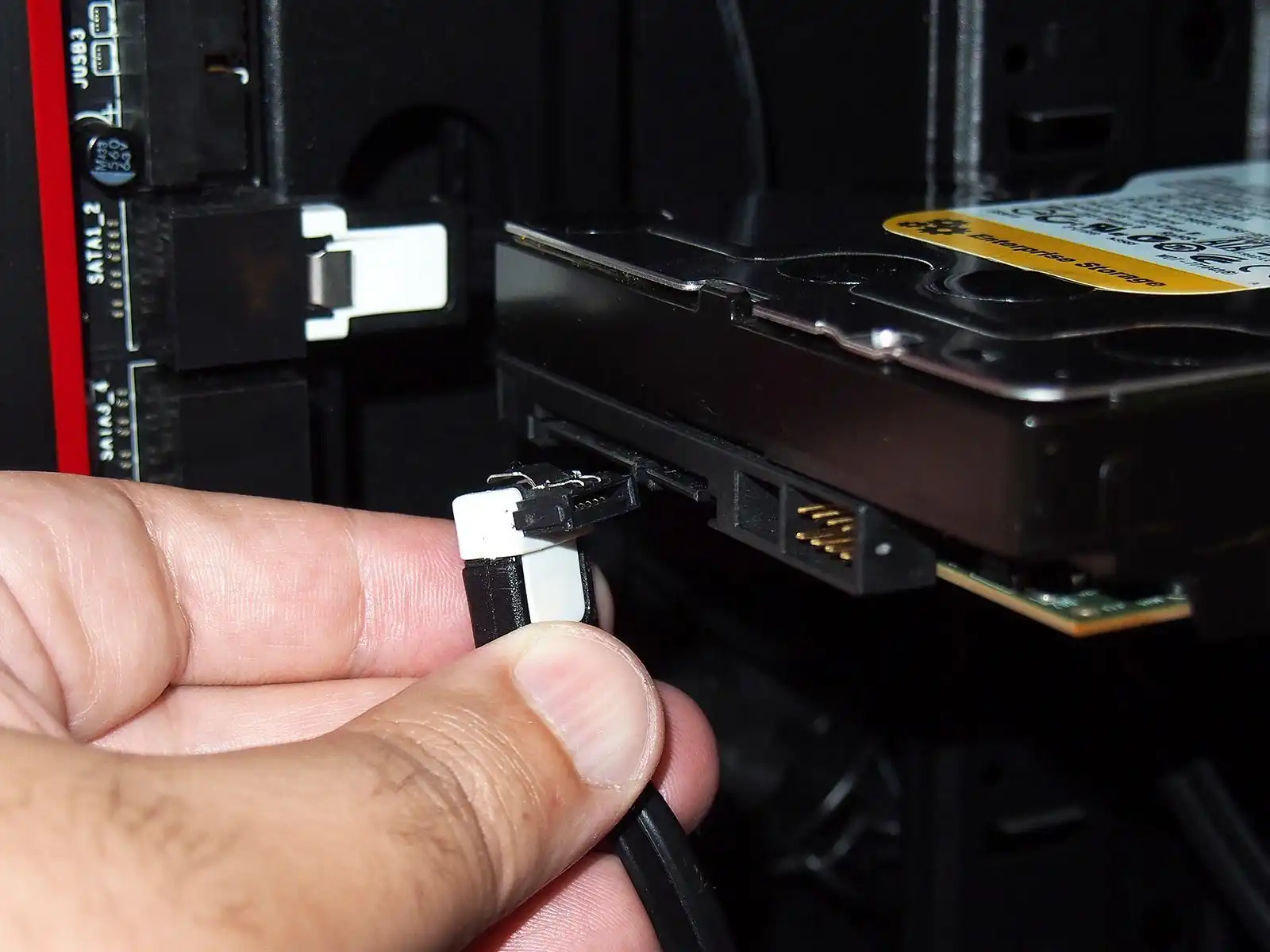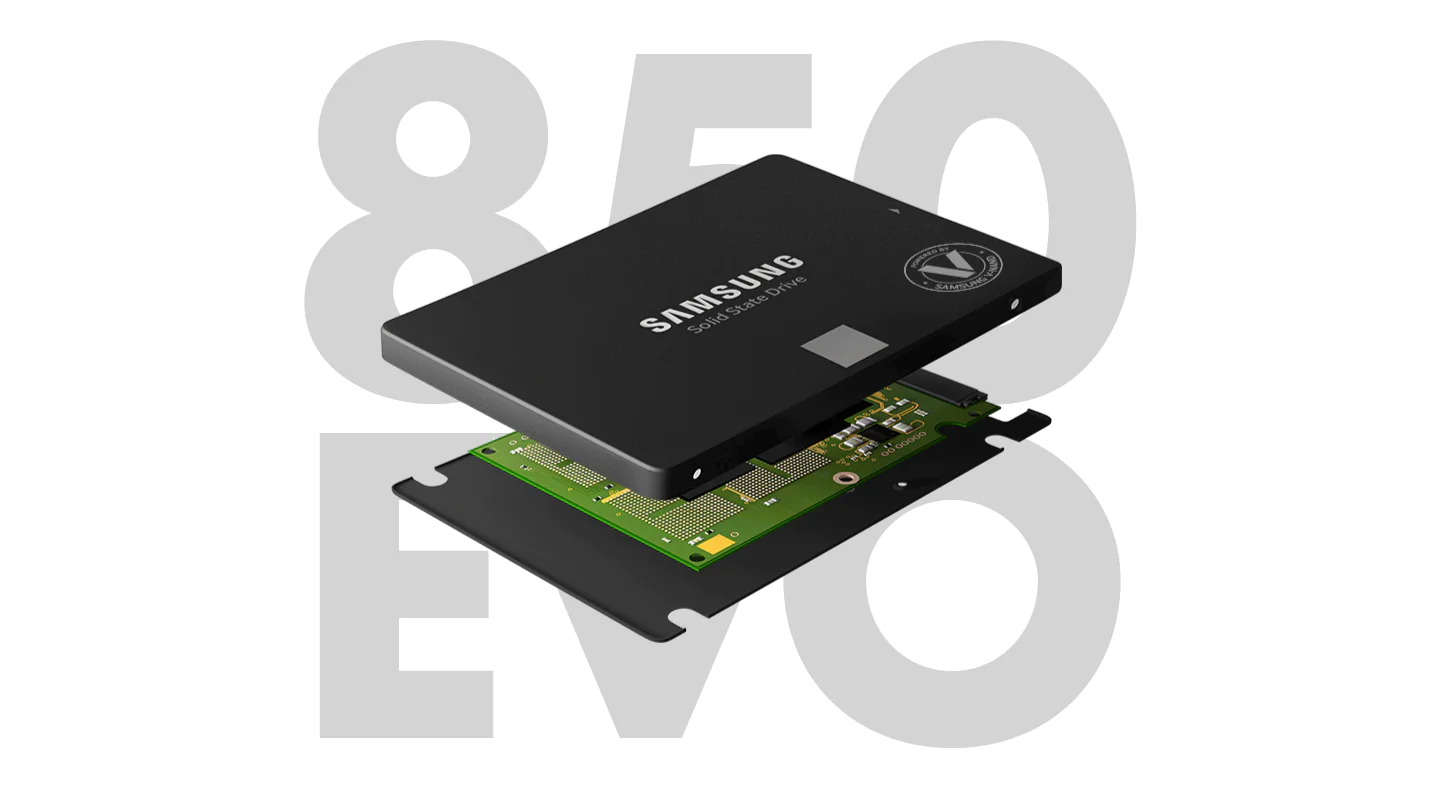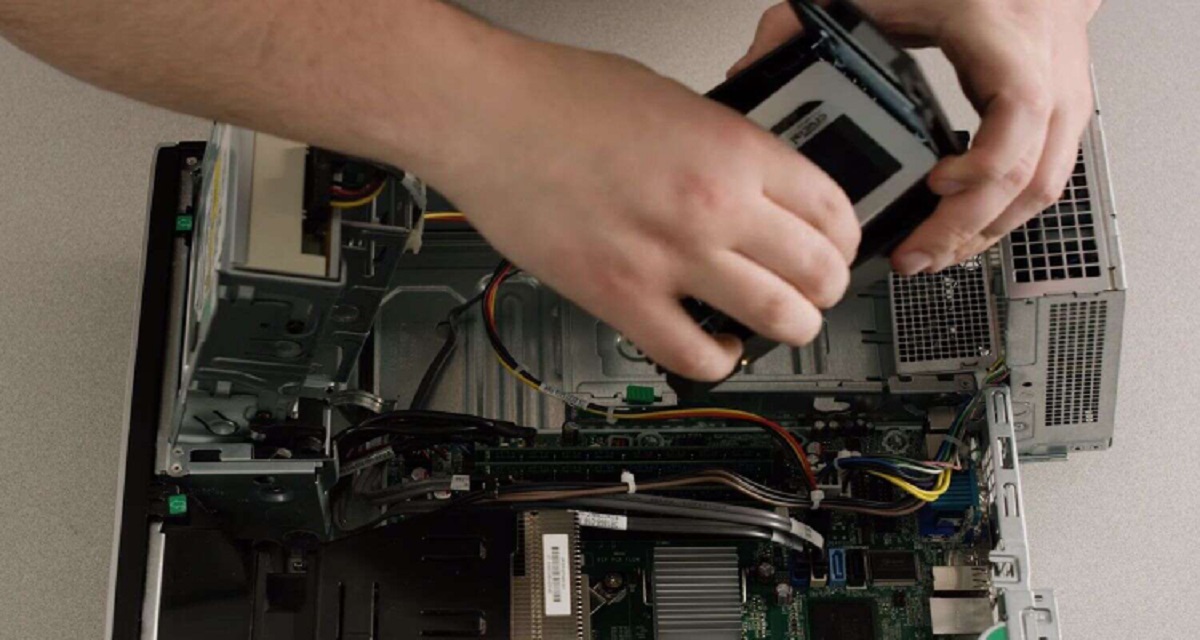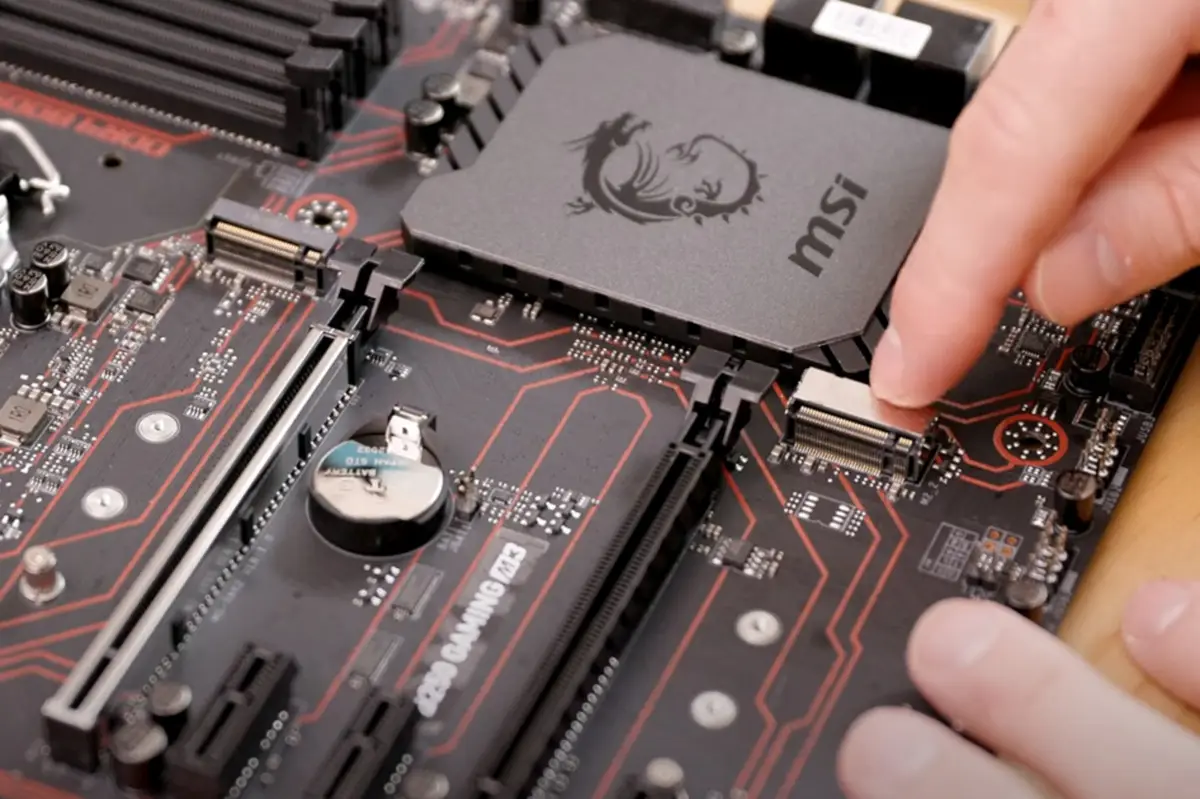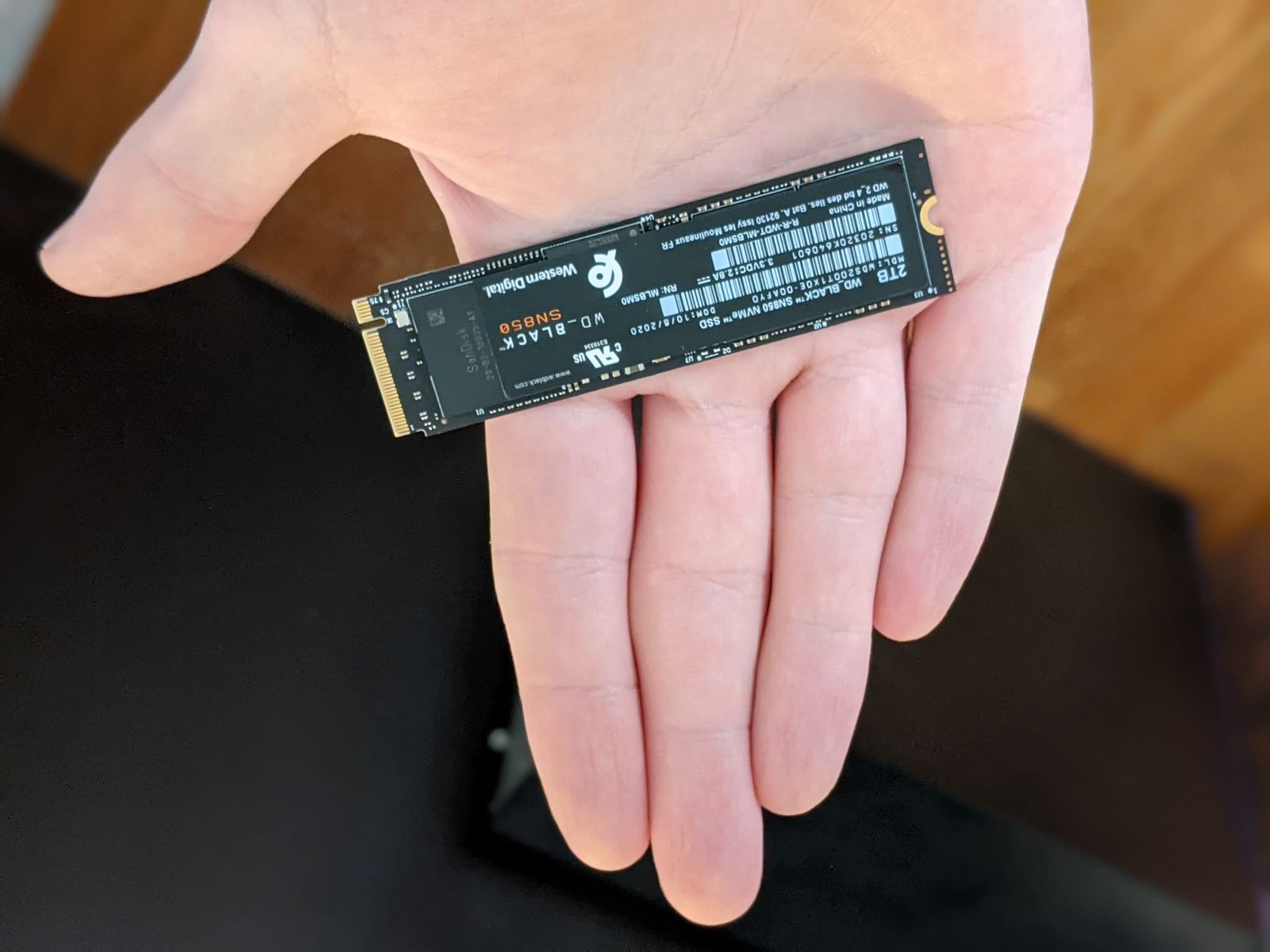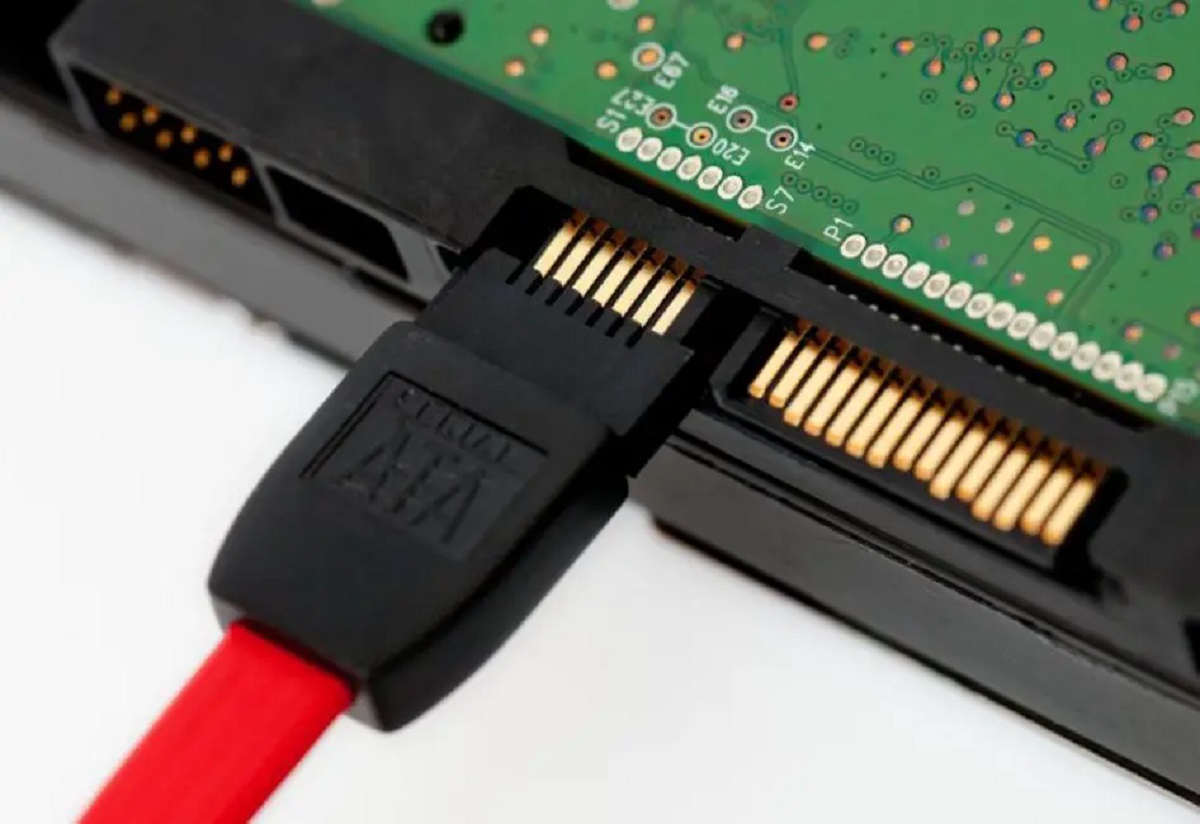Introduction
Welcome to our comprehensive guide on choosing the right SATA port for your SSD. If you’re new to the world of computer hardware, you might be wondering what exactly SATA is and why it matters when it comes to connecting your SSD. Well, fear not! We’re here to break it down for you.
SATA, or Serial ATA, is a technology that allows for the transfer of data between a computer’s motherboard and storage devices. This includes traditional hard drives as well as the faster and more efficient solid-state drives (SSDs). SATA ports come in various versions, each offering different speeds and capabilities. It’s essential to understand the different types of SATA ports to ensure optimal performance for your SSD.
In this article, we’ll explore the three main types of SATA ports commonly found on motherboards: SATA 1.5 Gbps, SATA 3 Gbps, and SATA 6 Gbps. We’ll discuss the differences between them, highlight their advantages and limitations, and ultimately help you determine which SATA port is the best choice for your SSD.
Whether you’re building a new computer, upgrading your existing one, or simply looking to maximize the performance of your SSD, knowing which SATA port to use is crucial. By the end of this guide, you’ll have a clear understanding of the options available and be well-equipped to make an informed decision.
So without further ado, let’s dive into the world of SATA ports and find out which one will make your SSD shine!
What is SATA?
SATA, which stands for Serial ATA, is a technology used for connecting storage devices, such as hard drives and solid-state drives (SSDs), to a computer’s motherboard. It replaced the older Parallel ATA (PATA) technology and has become the industry standard for data storage connections.
One of the significant advantages of SATA is its ability to improve data transfer speeds and reliability. It achieves this through a serial interface, where data is transferred one bit at a time, as opposed to the parallel interface used by PATA, which transfers multiple bits simultaneously. This serial transmission allows for higher data rates and longer cable lengths without signal degradation or interference.
SATA ports on motherboards come in various versions, denoted by their data transfer rates. The most common versions of SATA are SATA 1.5 Gbps, SATA 3 Gbps, and SATA 6 Gbps.
Additionally, SATA also offers other features such as native command queuing (NCQ), hot-plugging capabilities, and support for external storage devices through eSATA ports. NCQ enables the drive to optimize the order in which read and write operations are executed, resulting in improved performance and faster data access.
SATA has revolutionized the storage industry by providing faster and more efficient ways to transfer data between storage devices and computers. It has become the standard interface for connecting both traditional hard drives and SSDs. Over the years, various advancements have been made to SATA technology, resulting in faster data transfer speeds, increased storage capacities, and enhanced compatibility.
Now that we understand the basics of SATA, let’s dive into the different types of SATA ports and their respective capabilities.
Types of SATA Ports
There are three main types of SATA ports commonly found on motherboards: SATA 1.5 Gbps, SATA 3 Gbps, and SATA 6 Gbps. Each type offers different speeds and capabilities, which we’ll explore in detail.
SATA 1.5 Gbps: Also known as SATA I or SATA 1, this is the earliest version of SATA. It has a maximum data transfer rate of 1.5 gigabits per second (Gbps) and is capable of handling a theoretical throughput of 150 megabytes per second (MB/s). While it may seem slow compared to newer versions, SATA 1.5 Gbps is still sufficient for most traditional hard drives and some older SSDs.
SATA 3 Gbps: Commonly referred to as SATA II or SATA 2, this version offers a maximum data transfer rate of 3 Gbps, doubling the speed of SATA 1.5 Gbps. With a theoretical throughput of 300 MB/s, SATA 3 Gbps is suitable for a wide range of storage devices, including most SSDs and mechanical hard drives. While it may not support the latest high-speed SSDs, it is still a reliable option for many users.
SATA 6 Gbps: Also known as SATA III or SATA 3, this version is currently the latest and fastest of the three. With a maximum data transfer rate of 6 Gbps or 600 MB/s, SATA 6 Gbps provides superior performance for modern SSDs, which can take advantage of its high-speed capabilities. It is backward compatible with SATA 3 Gbps and SATA 1.5 Gbps devices, allowing for seamless connectivity and integration.
It’s important to note that the actual data transfer speeds achieved may not always reach the maximum theoretical limits of each SATA version. Factors such as the quality of the cables, the efficiency of the drive controller, and the overall system configuration can impact the actual transfer rates. However, having a faster SATA port does provide the potential for improved performance and faster data access.
Now that we’ve covered the different types of SATA ports, let’s explore which SATA port you should use for your SSD.
SATA 1.5 Gbps
SATA 1.5 Gbps, also known as SATA I or SATA 1, is the earliest version of SATA. It offers a maximum data transfer rate of 1.5 gigabits per second (Gbps), equivalent to 150 megabytes per second (MB/s). While it may be considered slow compared to newer SATA versions, it still has its uses.
SATA 1.5 Gbps is suitable for connecting traditional hard drives that do not require high-speed data transfer. These drives typically have lower read and write speeds compared to SSDs. If you have an older mechanical hard drive or a budget-friendly traditional hard drive, using a SATA 1.5 Gbps port will be sufficient to achieve optimal performance for that drive.
However, it’s important to note that if you’re planning to use a solid-state drive (SSD), it’s recommended to use a higher-speed SATA port if your motherboard supports it. This is because SSDs have faster read and write speeds than traditional hard drives, and using a SATA 1.5 Gbps port may limit their performance potential.
If you only have SATA 1.5 Gbps ports available on your motherboard and plan to use an SSD, don’t worry too much. While you won’t be able to take advantage of the higher speeds that newer SATA ports offer, SSDs connected via a SATA 1.5 Gbps port can still provide a significant performance boost compared to traditional hard drives.
If you’re unsure about the type of SATA port you have on your motherboard, consult the motherboard documentation or check the manufacturer’s website for detailed specifications. This will help you determine the maximum capabilities of each SATA port and make an informed decision on which devices to connect to which ports.
In summary, SATA 1.5 Gbps is the earliest version of SATA and offers a maximum data transfer rate of 1.5 Gbps or 150 MB/s. It is suitable for connecting traditional hard drives but may not provide optimal performance for SSDs. If possible, consider using a higher-speed SATA port for SSDs to take full advantage of their faster read and write speeds.
SATA 3 Gbps
SATA 3 Gbps, also known as SATA II or SATA 2, is the second version of SATA. It offers a maximum data transfer rate of 3 gigabits per second (Gbps), equivalent to 300 megabytes per second (MB/s). With double the speed of SATA 1.5 Gbps, SATA 3 Gbps is a reliable choice for connecting a variety of storage devices.
SATA 3 Gbps is suitable for most solid-state drives (SSDs) and traditional hard drives. While it may not provide the maximum performance for the latest high-speed SSDs, it still offers significant improvements over SATA 1.5 Gbps. SSDs connected via SATA 3 Gbps ports can benefit from faster read and write speeds, resulting in quicker data access and improved overall system responsiveness.
One advantage of SATA 3 Gbps is its backward compatibility with SATA 1.5 Gbps devices. This means that you can connect both SATA 3 Gbps and SATA 1.5 Gbps drives to a SATA 3 Gbps port without any issues. However, keep in mind that the actual data transfer speed will be limited to the slower SATA 1.5 Gbps rate if a SATA 1.5 Gbps device is connected.
When choosing between SATA 1.5 Gbps and SATA 3 Gbps for your storage devices, consider the performance requirements of your specific use case. If you have a high-speed SSD or require faster data transfer speeds for tasks such as video editing or gaming, opting for a SATA 3 Gbps port will ensure better performance compared to SATA 1.5 Gbps.
If your motherboard supports SATA 6 Gbps but you have a drive that only supports SATA 3 Gbps, you can still connect it to a SATA 6 Gbps port. The drive will operate at its maximum SATA 3 Gbps speed, but you’ll have the advantage of future compatibility if you decide to upgrade to a faster drive in the future. SATA ports are generally backward compatible, allowing you to use higher-speed drives with lower-speed ports if needed.
In summary, SATA 3 Gbps is the second version of SATA and provides a maximum data transfer rate of 3 Gbps or 300 MB/s. It is suitable for a wide range of SSDs and traditional hard drives, offering faster read and write speeds compared to SATA 1.5 Gbps. Consider your specific performance requirements when choosing between SATA 1.5 Gbps and SATA 3 Gbps for your storage devices.
SATA 6 Gbps
SATA 6 Gbps, also known as SATA III or SATA 3, is the latest and fastest version of SATA. It offers a maximum data transfer rate of 6 gigabits per second (Gbps), equivalent to 600 megabytes per second (MB/s). With double the speed of SATA 3 Gbps, SATA 6 Gbps provides superior performance for modern storage devices, particularly solid-state drives (SSDs).
SATA 6 Gbps is designed to take full advantage of the fast read and write speeds offered by high-performance SSDs. It allows for significantly faster data transfer, resulting in reduced boot times, shorter file loading times, and snappier overall system responsiveness.
If your SSD supports SATA 6 Gbps, using a SATA 6 Gbps port on your motherboard will ensure that you get the maximum performance out of your drive. The increased bandwidth allows for faster data transmission between the SSD and the motherboard, enabling the drive to operate at its full potential.
One important consideration when using SATA 6 Gbps is ensuring that your motherboard supports this version. If your motherboard only has SATA 3 Gbps ports, you can still connect a SATA 6 Gbps drive to these ports. The drive will operate at its maximum SATA 3 Gbps speed but could be limited if it requires the higher bandwidth offered by SATA 6 Gbps.
It’s worth noting that SATA 6 Gbps is backward compatible with SATA 3 Gbps and SATA 1.5 Gbps devices. This means you can connect older SATA drives to a SATA 6 Gbps port without any issues, although their transfer speeds will be limited by their respective capabilities.
When selecting a SATA port for your SSD or high-performance storage device, always prioritize a SATA 6 Gbps port if available. This ensures that you can achieve the fastest data transfer speeds and make the most of your high-speed drive.
In summary, SATA 6 Gbps is the latest version of SATA and offers a maximum data transfer rate of 6 Gbps or 600 MB/s. It is ideal for connecting modern high-performance SSDs, allowing for faster read and write speeds and improved overall system performance. Ensure that your motherboard supports SATA 6 Gbps to fully unleash the potential of your high-speed storage devices.
Which SATA Port Should I Use For SSD?
When it comes to connecting your SSD, choosing the right SATA port can have a significant impact on its performance. So, which SATA port should you use for your SSD? Let’s find out!
If your motherboard supports SATA 6 Gbps, it’s best to connect your SSD to a SATA 6 Gbps port. This will allow your SSD to take full advantage of its high-speed capabilities and ensure optimal performance. SATA 6 Gbps offers double the data transfer speed compared to SATA 3 Gbps, resulting in faster read and write speeds and improved overall system responsiveness.
However, if your motherboard only supports SATA 3 Gbps, don’t worry. You can still connect your SSD to a SATA 3 Gbps port, and it will work perfectly fine. While you won’t achieve the maximum speeds possible with a SATA 6 Gbps connection, the performance difference may not be noticeable in day-to-day usage, especially if you’re using a mid-range or budget SSD.
On the other hand, if your motherboard only has SATA 1.5 Gbps ports, it’s recommended to consider upgrading your motherboard if you have a high-speed SSD. SATA 1.5 Gbps may limit the performance potential of your SSD and prevent it from reaching its maximum speeds. Upgrading your motherboard to one that supports SATA 6 Gbps or SATA 3 Gbps will ensure that you can take full advantage of your SSD’s capabilities.
Keep in mind that regardless of the SATA port speed, SSDs offer significantly faster read and write speeds compared to traditional hard drives. Even connecting your SSD to a SATA 1.5 Gbps port will provide a considerable performance boost compared to a traditional hard drive.
It’s also worth mentioning that the actual performance of your SSD may vary depending on other factors such as the quality of the SSD controller, the type of NAND flash memory used, and the firmware optimizations implemented by the SSD manufacturer. While the SATA port plays a crucial role, these other factors can also impact the overall performance of your SSD.
In summary, if your motherboard supports SATA 6 Gbps, it’s recommended to use a SATA 6 Gbps port for your SSD to achieve maximum performance. If your motherboard only supports SATA 3 Gbps, it is still a viable option and will provide significant performance improvements over traditional hard drives. However, consider upgrading your motherboard if you have a high-speed SSD to take full advantage of its capabilities.
Conclusion
Choosing the right SATA port for your SSD is an essential consideration to ensure optimal performance. SATA 6 Gbps is the fastest and most capable option available, offering maximum data transfer speeds and allowing your SSD to operate at its full potential. If your motherboard supports SATA 6 Gbps, it’s highly recommended to connect your SSD to a SATA 6 Gbps port.
However, if you have a motherboard that only supports SATA 3 Gbps or SATA 1.5 Gbps, don’t worry. Connecting your SSD to these ports will still provide significant improvements over traditional hard drives and can be a viable option, especially for mid-range or budget SSDs.
Keep in mind that the actual performance of your SSD may be influenced by other factors such as the SSD controller, NAND flash memory, and firmware optimizations implemented by the manufacturer. While the SATA port plays a crucial role in data transfer speeds, these factors should also be considered when evaluating the overall performance of your SSD.
If you find yourself limited by a motherboard that only offers SATA 1.5 Gbps ports and have a high-speed SSD, you may want to consider upgrading your motherboard to take advantage of the faster SATA options available. This will future-proof your system, allowing for potential upgrades and ensuring optimal performance for your SSD.
Ultimately, choosing the right SATA port for your SSD depends on your specific hardware configuration and performance requirements. Whether it’s SATA 6 Gbps, SATA 3 Gbps, or SATA 1.5 Gbps, each offers its benefits and limitations. Consider your motherboard’s capabilities, SSD specifications, and performance needs when making your decision.
We hope this guide has provided clarity and insights into the different types of SATA ports and helped you make an informed decision. Remember, the right SATA port can make a significant difference in the performance of your SSD, so choose wisely to ensure a smooth and efficient computing experience.







